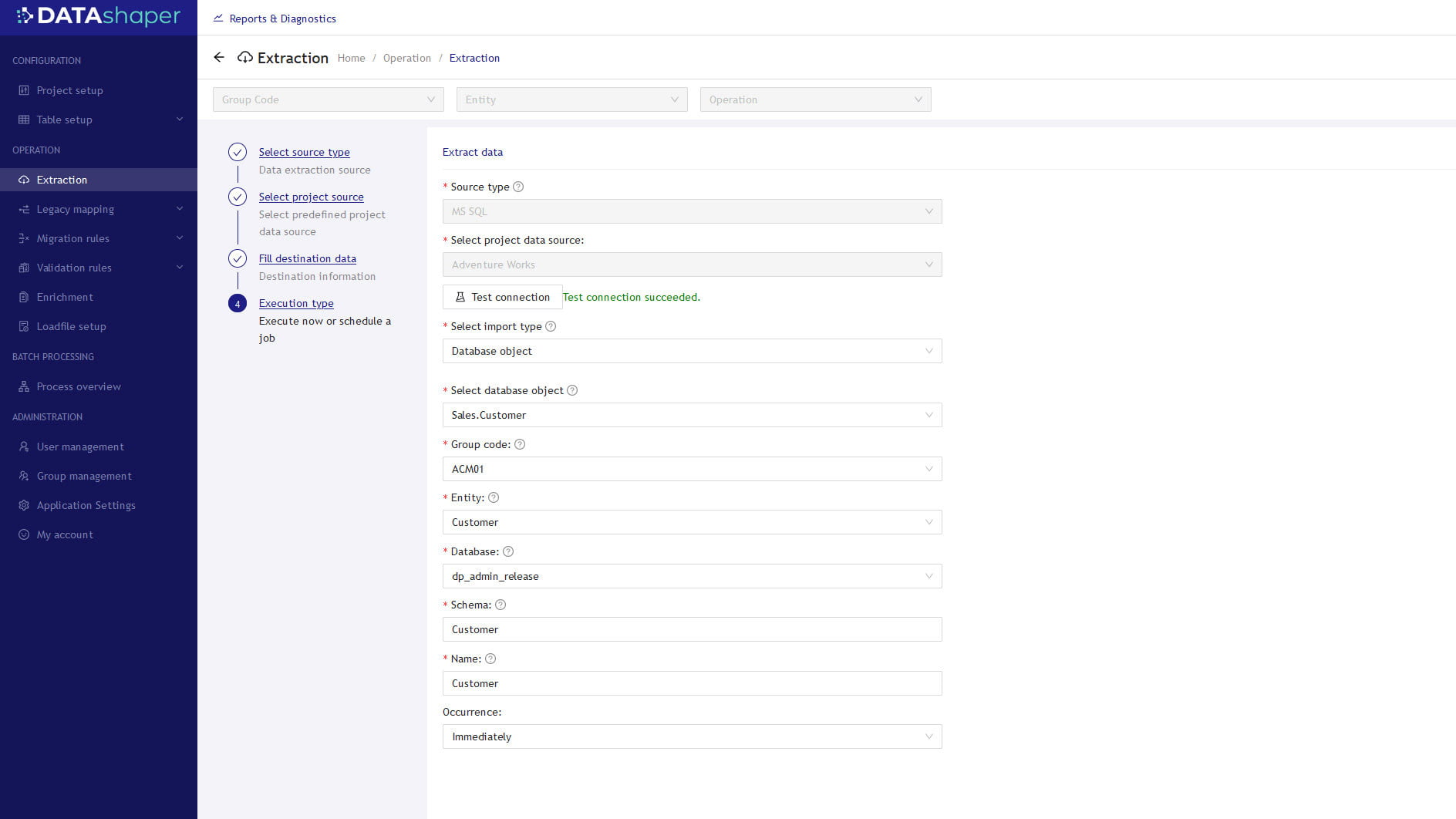The ETL (Extract, Transform, Load) migration process involves extracting data from various sources, transforming it into the required format, and loading it into a target system. This process ensures data is cleaned, enriched, and optimized for seamless integration and use in new environments


Extract data from your legacy system, database, application or files on a periodica basis which is used as our anchor point to perform the migration. You can combine various sources further in the ET Process. Extraction ensures that all necessary data is gathered without losing integrity or introducing errors.

The Legacy Mapping step converts extracted data into a format compatible with the target system before any cleansing or validation. This step lays the foundation for the data to be migrated. We can choose to migrate values one-to-one, assign default values, transform base values, or generate new values.

In this step, we apply business rules to determine whether a record should be migrated to the new system or left behind. These rules are gathered from various business departments and assigned a logical migration weight. Each record is evaluated against these rules, and the results are reported back to the business, detailing the scope and reasoning for each decision.

First, we gather the business and target system rules, which constrain the dataset and ensure that all mandatory requirements are met. This includes verifying that field options exist in the new system, mandatory fields are completed, structured formats are followed, and dependencies are met.
Next, we select and transform the data from our legacy table, applying these rules to determine if the data is ready for migration or if further data improvement is needed.

For each entity in scope, we generate various load files, each requiring different levels of attention. The first type provides data in a reviewable format before loading. The second type highlights potential load file issues, detailing necessary changes to improve data quality. The final type includes actual candidates ready for loading into the target environment.
Curious about our tool? Let’s get to
work!
Need a Data Migration Team, the expert tool for your existing team, or a blend of both?
